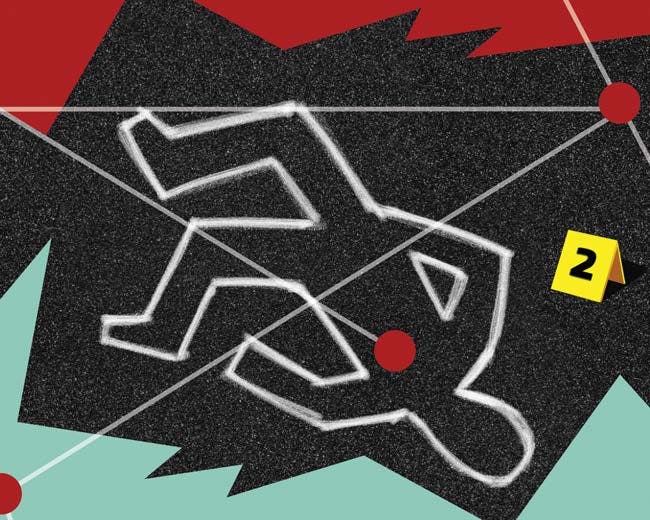
Connecting the Dots
Fingerprints
Fingerprint Identification and Classification
Francis Galton, a cousin of Charles Darwin and who, for most of his career, was identified with the eugenics movement, became a leading figure in the development of using fingerprints to identify individuals. In 1892, he published his landmark book, Finger Prints, in which he established the uniqueness and permanence of fingerprints and included a classification system based on loops (patterns that curve back upon themselves), whorls (circular patterns), and arches (patterns which form no loops or circles).
Friction Ridges
The tip of a finger has a series of peaks and valleys known as friction ridge skin. The darks lines of a fingerprint represent the peaks of friction ridges. Identification is based primarily on what’s known as the minutiae: the location and direction of ridge endings and splits along a ridge path. Prints found at a crime scene are referred to as latent prints. A forensic scientist compares these latent prints with fingerprints of known individuals who have been arrested for a crime.
Fingerprints for Identification
Fingerprints were initially not used for law enforcement. William James Herschel, a British civil servant in India and grandson of astronomer William Herschel, began using fingerprints in the 1850s for legal contracts. In 1880, Herschel published a letter in the journal Nature describing his fingerprinting work and suggesting the permanence of an individual’s prints. Henry Faulds, a Scottish physician living in Japan, published his own article in Nature in 1880. Dr. Faulds used fingerprints for ethnological studies, but also mentioned in the article the possibility of using prints to catch criminals. An argument over priority ensued, but Herschel’s contributions proved to have a lasting impact through his collaboration with Francis Galton.
Henry Classification System
Sir Edward Henry, an administrator in Bengal, India, during the 1880s, first began using fingerprints for legal documents. When Henry returned to England in 1894, he developed a classification system, assigning each finger a number according to the order in which it is located on the hand: the right thumb is number 1, the left thumb is 6. Henry also assigned additional values to fingers that have whorl patterns. This 10-print classification system allowed for 1,024 primary groupings. In 1901, Scotland Yard adopted the Henry Classification System and it soon became the basis for fingerprint systems widely used in the United States until the 1990s.
Measuring Criminals
Prior to the adoption of fingerprinting, a system of measurements, or, anthropometry, was widely used in law enforcement. Developed by French criminologist Alphonse Bertillon, the system, known as Bertillonage, used photographs and detailed body measurements to identify and classify individuals. Police departments in the U.S. and Europe implemented Bertillon’s system during the last two decades of the 19th century. But the system had its flaws. Measurements were often inconsistent due to imprecise instruments, the person taking the measurements, or a change in the suspect’s body due to age or injury. Although Bertillon incorporated fingerprints into his system, by 1920 the preciseness of fingerprinting had displaced Bertillon’s anthropometric measurement system.
Automating the Fingerprint System
In 1924, the FBI created its Identification Division to be a centralized repository of fingerprint data. The initial database of 810,000 records grew to over 75 million criminal and military records during the next four decades. In the early 1970s, the FBI automated its storage and matching processes. Today, the Automated Fingerprint Identification System contains 120 million fingerprint records. The FBI performs over 10,000 latent print searches per month for law enforcement agencies throughout the country.
